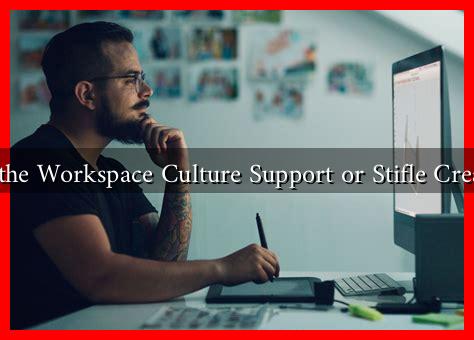-
Table of Contents
Does the Workspace Culture Support or Stifle Creativity?
In today’s fast-paced and ever-evolving business landscape, creativity is often heralded as a key driver of innovation and success. However, the workspace culture can significantly influence whether creativity flourishes or falters. This article explores how different aspects of workplace culture can either support or stifle creativity, providing insights and examples to illustrate these dynamics.
The Importance of Workspace Culture
Workspace culture encompasses the values, beliefs, and behaviors that shape how employees interact and work together. A positive culture can foster collaboration, open communication, and a sense of belonging, all of which are essential for creative thinking. Conversely, a toxic or rigid culture can lead to fear, conformity, and disengagement, stifling creativity.
Factors That Support Creativity
Several key factors within a workspace culture can enhance creativity:
- Open Communication: Encouraging open dialogue allows employees to share ideas without fear of judgment. Companies like Google have implemented open office spaces and regular brainstorming sessions to promote idea sharing.
- Flexibility: A flexible work environment that allows for remote work or flexible hours can lead to increased creativity. Research from Stanford University found that remote workers were 13% more productive than their in-office counterparts.
- Diversity: A diverse workforce brings together different perspectives and experiences, which can lead to innovative solutions. A study by McKinsey & Company found that companies with diverse teams are 35% more likely to outperform their competitors.
- Encouragement of Risk-Taking: Cultivating a culture that embraces experimentation and tolerates failure can lead to groundbreaking ideas. Companies like 3M encourage employees to spend 15% of their time on projects of their choosing, leading to innovations like Post-it Notes.
Factors That Stifle Creativity
Conversely, certain cultural elements can hinder creativity:
- Hierarchical Structures: Rigid hierarchies can create barriers to communication and idea sharing. Employees may feel that their ideas are not valued, leading to a lack of engagement.
- Fear of Failure: A culture that punishes mistakes can discourage employees from taking risks. This fear can lead to a lack of innovation, as employees may stick to tried-and-true methods rather than exploring new possibilities.
- Micromanagement: When leaders closely monitor every aspect of an employee’s work, it can stifle creativity. Employees may feel they have little autonomy, leading to disengagement and a lack of innovative thinking.
- Inflexibility: A rigid work schedule or environment can limit creative thinking. Employees may feel constrained by their surroundings, leading to a lack of inspiration.
Case Studies: Companies That Get It Right
Several companies have successfully cultivated a culture that supports creativity:
- Pixar: Known for its innovative films, Pixar fosters a culture of collaboration and open feedback. The “Braintrust” meetings allow employees to share ideas and critique each other’s work in a supportive environment.
- Spotify: The music streaming giant promotes a culture of autonomy and flexibility. Employees are encouraged to work in teams that align with their interests, leading to increased motivation and creativity.
- Adobe: Adobe’s “Kickbox” program provides employees with resources and time to develop their ideas, fostering a culture of innovation and creativity.
Conclusion: Cultivating a Creative Workspace Culture
In conclusion, the workspace culture plays a pivotal role in determining whether creativity is supported or stifled. By fostering open communication, flexibility, diversity, and a willingness to take risks, organizations can create an environment where creativity thrives. Conversely, hierarchical structures, fear of failure, micromanagement, and inflexibility can hinder innovative thinking. As businesses continue to navigate the complexities of the modern world, prioritizing a culture that nurtures creativity will be essential for long-term success.
For further reading on how to cultivate a creative workplace culture, consider exploring resources from Forbes.


